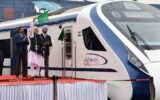Tata Motors Limited: History, Company Profile, Origin
Tata Motors Introduction
Tata Motors Limited was formerly known as Tata Engineering and Locomotive Company(Telco). It is among the top multinational Automotive company, which is manufacturing personal, commercial, and military vehicles. Its headquarter is situated in Mumbai, India.
In the Financial year, 2017-2018 its market share was closer to 44% in the Indian domestic commercial vehicles. In the passenger vehicle sales, its share was 6.39%. It’s among the top 5 passenger vehicle manufacturers by share.
Tata Motors History
Tata Motors was founded in 1945 and started its operations as a manufacturer of locomotives. After 9 years in 1954, In collaboration with Daimler-Benz AG, manufactures its first commercial vehicle in history; its partnership with Daimler-Benz AG was ended in 1969.
In 1988, Tata Motors started the manufacturing of passenger vehicles, with the launch of the model Tata Mobile and after that Tata Sierra in 1991, and become the first Indian automobile company to manufacture a fully indigenous automobile.
Also Read: Maruti Suzuki
After the successful lunch of Sierra, In 1998, Tata Motors launched the first fully indigenous passenger car named Indica in India, and in 2008 it launched the Tata Nano, which is also promoted as the world’s cheapest car. Tata Motors also expands its portfolio in commercial vehicles by launching lighter trucks, called LCV (Light Commercial Vehicles), which would lead to the appearance of the first light truck, the Tata 407. It also started exporting cars to South Africa.
Tata Motors has its own manufacturing and assembly facilities in Jamshedpur, Pantnagar, Lucknow, Sanand, Dharwad, and Pune in India, and also outside the country as in Argentina, South Africa, Great Britain, and Thailand. It has also R&D centers in Pune, Jamshedpur, Lucknow, Dharwad, South Korea, Great Britain, and Spain.
The company grew within the South Asian continent, achieving great success. In the year 2004 Tata Motors listed on the stock market BSE and became the most important corporation in India. On 27 September 2004, it also listed on the New York Stock Exchange.
In the same year, it acquired the South Korean company Daewoo’s truck manufacturing unit and named as Tata Daewoo. Its expansion goes beyond its borders, in 2005 it acquired 21% of the shares of the Spanish bus and coach manufacturer company Hispano Carrocera SA. And jointly developed the buses named Starbus and Globus.
Also Read: Mahindra & Mahindra
After that in 2006, Tata Motors formed a joint venture with the Brazilin company Marcopolo and manufactures a bus named Tata Marcopolo Bus. This year it also signed a production and distribution agreement with Fiat Group. In 2008, it acquired the English car maker Jaguar and Land Rover brands from Ford Motor Company. In 2009, it acquired full ownership of the Spanish company Hispano Carrocera SA.
The current position of Tata Motors
The company started steadily growing year after year, indicating the figures that it achieved in the last financial year by the growth of 23.17% in its commercial vehicle segment, which in real numbers would be that they amounted to 3,76,456 units.
In the car segment, Tata overtook Honda Cars India to become the fourth-largest automaker in India. With the launch of new models of its British subsidiary Jaguar Land Rover also recovered its profitability and increased its market shares.
Also Read: Ashok Leyland Ltd.
TATA MOTORS recently introduced an electric version of the world’s cheapest vehicle. Named NANO EV, the model marks the entry of the Indian company in the segment of ecologically correct automobiles. According to the manufacturer, the model has 40 kW (54 hp) of power, being powered by lithium-ion batteries.
Official data says it accelerates from 0 to 100 km / h in less than 10 seconds and can reach 110 km / h. Its autonomy would reach 160 km. In 2010 the automaker presented a new crossover called TATA ARIA. The model brings a new platform, called X2, where the brand privileges the comfort of the passengers, without abandoning characteristics that take it to the off-road. Another highlight of the model is to be the first vehicle of the automaker to come equipped with stability control (ESP).
Future
Tata Motors currently provides the latest models for sale: Safari Storme, Sumo Gold, Harrier, Nexon, Bolt, Zest, Hexa, Tigor, Tiago, and commercial vehicles. It also in the process of developing the first prototype automobile with a compressed air engine, named Tata One CAT, whose system consists of two air tanks and is filled by the conventional electric current. This car can reach 100 km/h in less than 5s.
Also Read: Bajaj Auto Company
They also worked on a hybrid version of this car, which would place Tata Motors among the top automotive company in the world having this technology.
Hence from 1945 to date Tata Motors grow and achieve great success in the field of automobile manufacture.
FAQ:
When was Tata Motors Founded?
Tata Motors was founded in 1945 by Jehangir Ratanji Dadabhoy Tata
Tata Motors Origin Country?
India
Who is Tata Motors Founder?
J. R. D. Tata
In which Year Tata Motors established?
1945
Read More: Auto News Reporter











